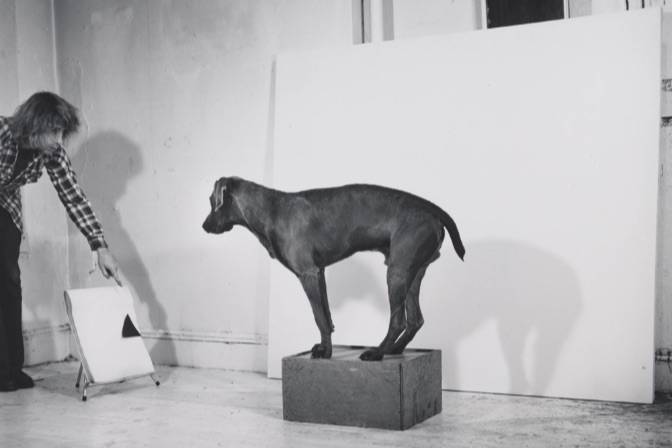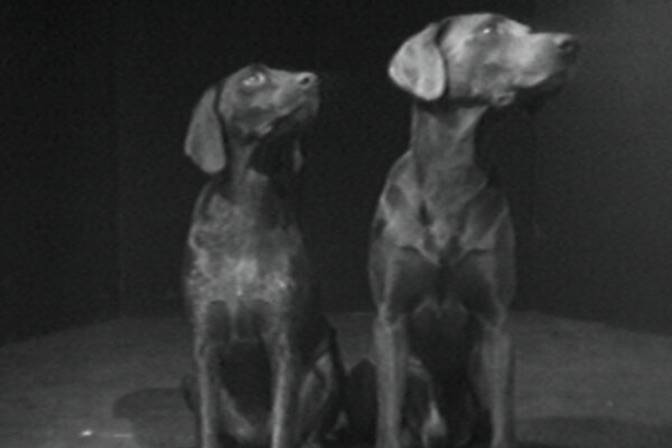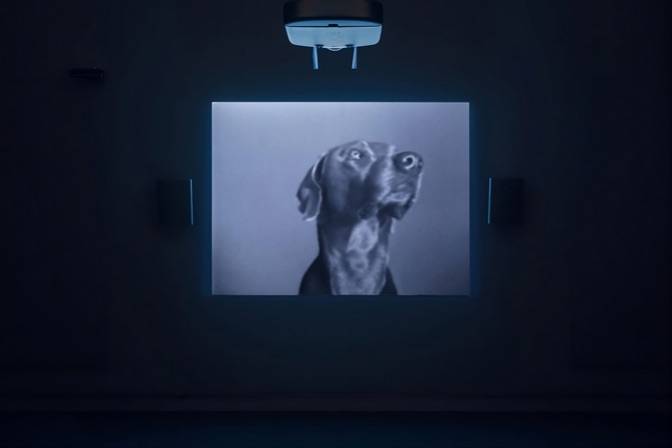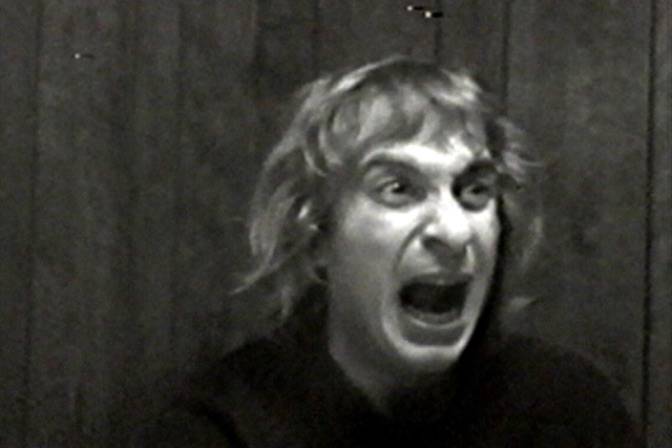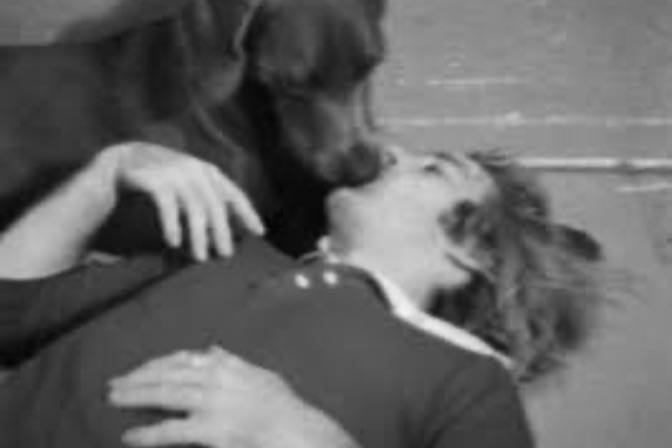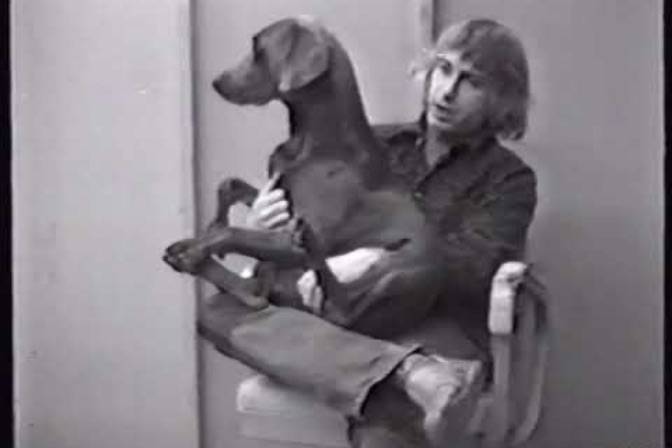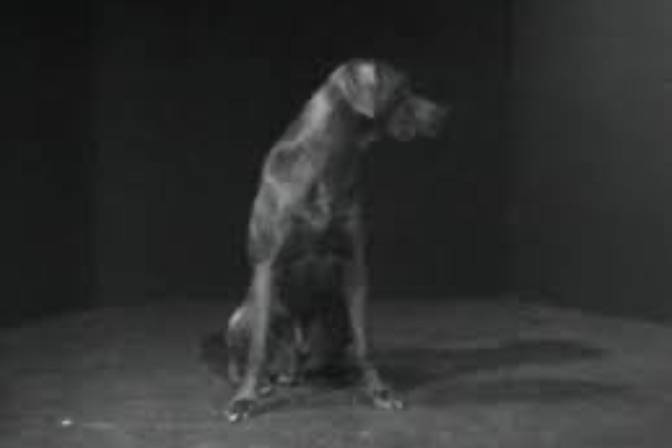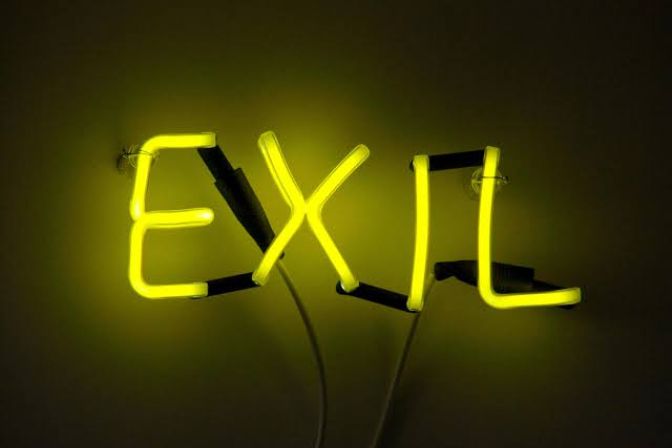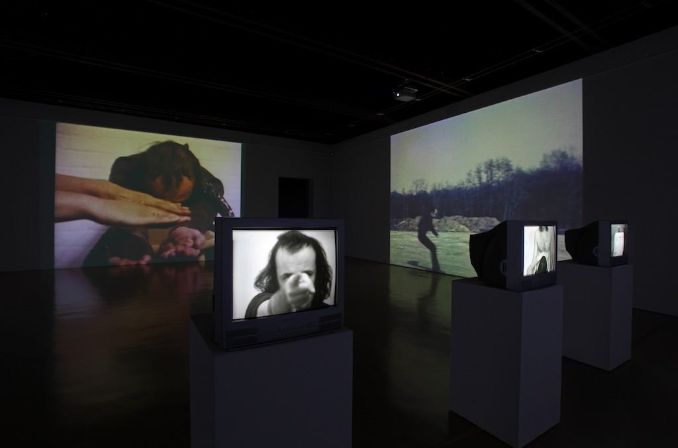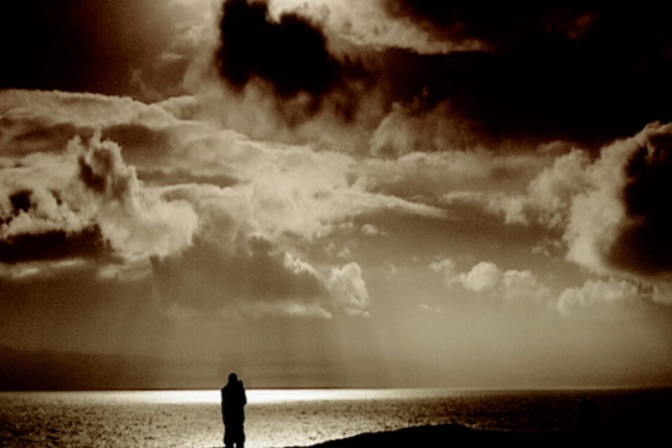William Wegman: Video and Performance (b. 1943, Massachusetts, USA) showcases Wegman’s early video and performance works, which exemplify a unique blend of deadpan humor, conceptual rigor, and performative simplicity. Working in the early 1970s with a fixed camera and minimal props, Wegman created short, single-take video pieces that often featured his Weimaraner dog, Man Ray, as both co-star and conceptual foil.
These works—such as Milk/Floor and Spelling Lesson—are deceptively straightforward, using mundane actions and absurd setups to explore the boundaries of authorship, communication, and the viewer’s expectations. Man Ray, unaware of his “role,” becomes a quiet disruptor of the artist’s intentions, his blank stare and unfiltered responses anchoring each piece with an unforced sincerity. Wegman’s minimalist gestures—pouring milk, pronouncing letters, contorting his body—invite reflection on the absurdities of instruction, control, and performance, all while subtly parodying the seriousness of early conceptual and video art. Despite their lo-fi production, these tapes remain potent in their capacity to unsettle, amuse, and gently reframe the relationship between artist, audience, and subject.
William Wegman’s enduring partnership with his Weimaraner dogs is more than a visual gimmick—it is a deep, sustained artistic collaboration. Beginning with Man Ray in the 1970s, Wegman explored the expressive and physical capacities of his canine subjects with empathy, wit, and discipline. Unlike anthropomorphic depictions that reduce animals to human stand-ins, Wegman’s dogs command the frame with a presence that is both surreal and self-possessed. They are characters, models, and muses—imbued with personality, dignity, and a curious sense of timelessness.
Emerging from the conceptual art movement of the 1970s, Wegman distinguished himself by integrating sharp humor into otherwise austere aesthetic traditions. His early video works—deadpan, awkward, and brief—echoed the sensibilities of performance art while resisting self-seriousness. This tension between intellect and absurdity became a hallmark of his practice, as he used seemingly simple setups to undermine artistic pretension and invite viewers into moments of quiet, often awkward revelation.
Wegman’s studio operates as a hybrid space: part photographic set, part theater, part playground. His constructed environments, filled with costumes, props, and minimalist furniture, evoke both domestic familiarity and dreamlike disorientation. The dogs are staged with precision, yet they exude spontaneity, often appearing more at ease than human performers might. This theatricality blurs the boundary between fine art photography and performance, raising questions about agency, intention, and collaboration in staged imagery. Though best known for his Polaroid photographs, Wegman is a multidisciplinary artist whose practice spans painting, drawing, video, and children’s literature. His works on paper and canvas often display a childlike quality—loose, colorful, and associative—offering a counterpoint to the controlled elegance of his photographs. This breadth speaks to Wegman’s refusal to be confined by medium, and to his ongoing exploration of how images function in everyday life, from the gallery wall to the picture book page.
Wegman’s work has left an indelible mark on contemporary visual culture, influencing artists, advertisers, and filmmakers alike. His distinctive fusion of conceptual rigor and pop accessibility opened new paths for photography as both high art and mass media. By centering the gaze of an animal—calm, watchful, and oddly human—Wegman invites viewers to reconsider ideas of authorship, identity, and empathy. His oeuvre remains a testament to the power of humor, patience, and deep attention in artistic practice.
William Wegman: Video and Performance is a Film and Video Umbrella (FVU) touring programme, funded by Arts Council England.

